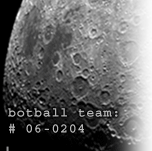


Mars Exploration Rover (MER) is one of the greatest space exploration robots ever invented. The MER’s six adaptable wheels give it the capability of moving almost anywhere on the Martian landscape. The nine cameras set up on different points of the robot allow for examining the entire landscape. The MER robot has a large robotic arm to work with the different rocks and Martian soil that it deals with. It carries instruments that are able to detect water and its remnants. To power all of this equipment, solar panels cover most of the robot (Malik, 2003).
Aside from the power source, the lunar rover could use much of the same technologies designed for the Martian MER rover. To examine rocks for remains of water, the lunar rover requires a similar robotic arm to the one utilized by the Martian rover. Our robot would need the heating unit that the MER benefits from to keep the computer and other sensitive equipment safe from the harshly cold lunar temperatures. The computer equipment needed for analysis could be similar because both missions are searching for water and signs of life. In addition, the mechanisms that allow the MER to cover the terrain of Mars could be used to cover the rocky terrain of the Aitken Basin. Also, the lunar rover could make use of the MER’s unique pancam. The pancam is a panoramic camera which allows the robot to see everything around it at once without turning its cameras. The pancam is a powerful color imaging system which is able to send high definition surveys of Mars back to Earth.
Solar panels and the use of solar light is a great source of sustainable power for the MER robot to Mars; however, the Aitken Basin is an immense, deep crater on the far side of the moon. Because of the angles at which solar rays strike the lunar surface, parts of the south pole such as the Aitken Basin receive little or no light, making it impossible for a rover to use solar power. In the complete darkness of the south pole of the moon, the rover would require another source of power. Also, unlike the MER, the lunar robot on the Aitken Basin could be more easily controlled by technology with human input because the radio contact delay is much less than the delay to contact a Martian rover. Communication blackouts on the moon would be much less frequent than on Mars (David, 2003).
Consequently, many of the technologies used to run the MER rovers to Mars
could be used on a lunar robot mission to the Aitken Basin, except the
power source.

